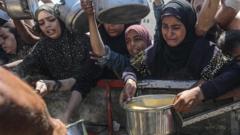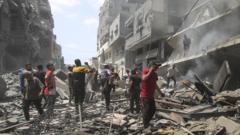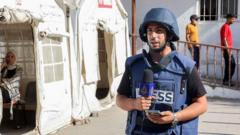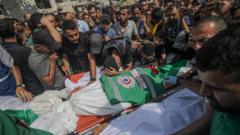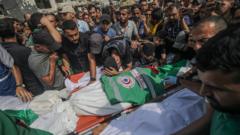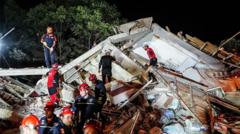Residents of Tehran woke up to devastation and fear, with reports of airstrikes sending shockwaves across the city. Essential supplies are in high demand as communities brace for potential future attacks.
Israel Launches Airstrikes on Tehran, Civilians Amidst Uncertainty

Israel Launches Airstrikes on Tehran, Civilians Amidst Uncertainty
Tensions escalate as Iranian citizens face chaos in the aftermath of Israeli strikes targeting military and nuclear sites.
On June 13, 2025, residents of Tehran found themselves grappling with the reality of airstrikes that had targeted various strategic locations across the city, including military and nuclear facilities. The night was marked by loud explosions that echoed throughout the Iranian capital, leaving the populace in disbelief and panic.
Witnesses noted that lines began forming at gas stations and grocery stores, indicating a rush to secure resources as citizens prepared for uncertain times ahead. Early reports hinted at casualties, with Iranian officials confirming that a number of civilians had died, including children, although a complete casualty tally was still pending.
The Israeli strikes focused on significant nuclear installations, such as the Natanz facility near Isfahan, and military installations around Karaj. A multitude of military bases and research centers were also hit in an extensive campaign that Israeli forces executed on Friday. Disturbingly, residential buildings in both affluent and more modest neighborhoods of Tehran were also targeted, causing widespread alarm amongst the affected communities.
Despite the severity of the attacks, Iranian officials downplayed the warning signs leading up to the strikes, labeling them as mere propaganda meant to coerce Iran into concessions during ongoing nuclear negotiations with the United States. In a bid to calm the populace, government representatives called for serenity amidst the chaos, yet offered little in terms of public safety measures or guidance on how to protect themselves from potential further assaults.
Witnesses noted that lines began forming at gas stations and grocery stores, indicating a rush to secure resources as citizens prepared for uncertain times ahead. Early reports hinted at casualties, with Iranian officials confirming that a number of civilians had died, including children, although a complete casualty tally was still pending.
The Israeli strikes focused on significant nuclear installations, such as the Natanz facility near Isfahan, and military installations around Karaj. A multitude of military bases and research centers were also hit in an extensive campaign that Israeli forces executed on Friday. Disturbingly, residential buildings in both affluent and more modest neighborhoods of Tehran were also targeted, causing widespread alarm amongst the affected communities.
Despite the severity of the attacks, Iranian officials downplayed the warning signs leading up to the strikes, labeling them as mere propaganda meant to coerce Iran into concessions during ongoing nuclear negotiations with the United States. In a bid to calm the populace, government representatives called for serenity amidst the chaos, yet offered little in terms of public safety measures or guidance on how to protect themselves from potential further assaults.

